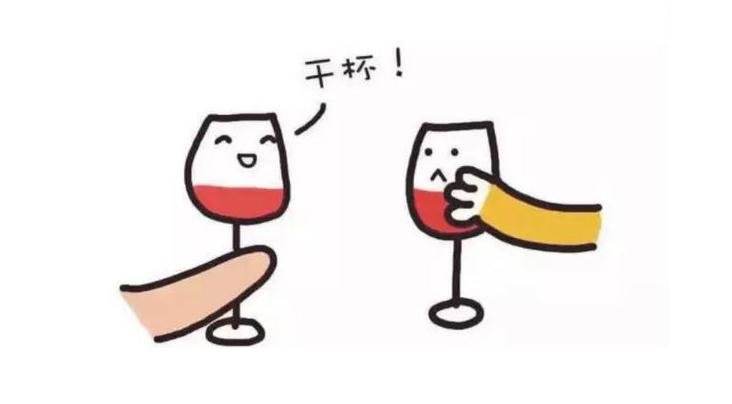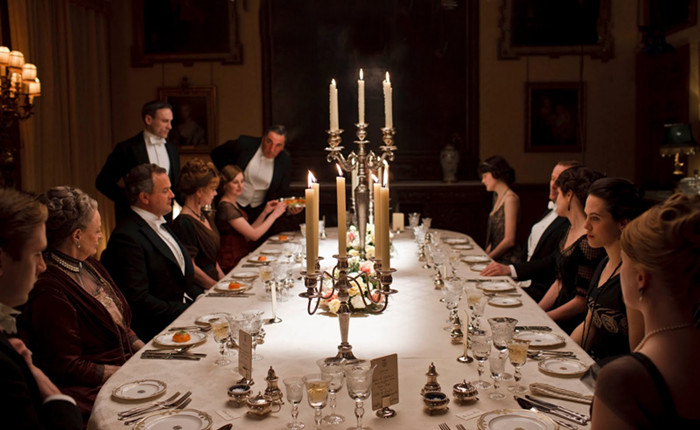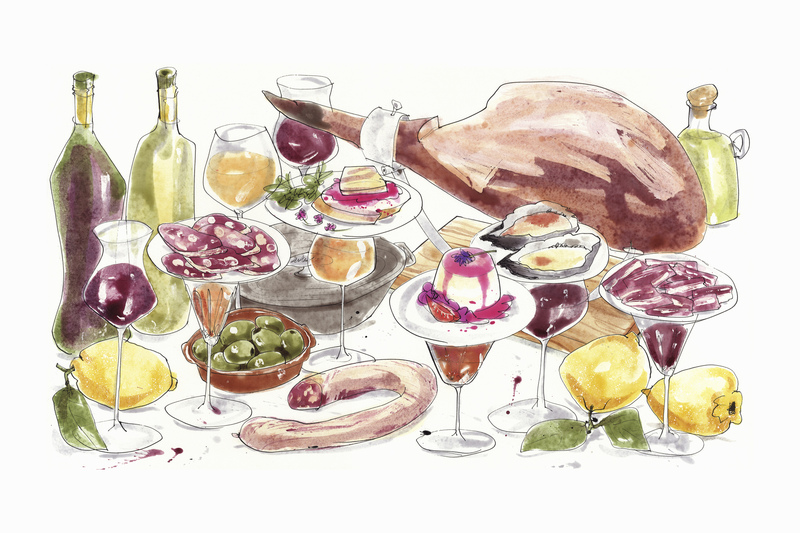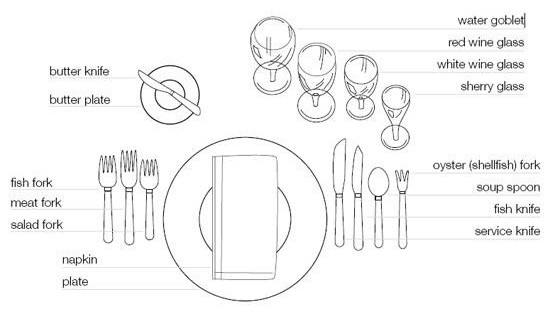英语学习| 西餐礼仪原来这么“麻烦”!
时间:2017-03-16 17:25:45 来源:http://www.pinghe.com 作者:Cara

在中国吃饭,要讲究辈分入座
在西方吃饭,原来还有比中餐更讲究的事
什么是头菜、主菜、餐后甜品?
如何入席和离席?
餐具也不要摆错
不然别人会误以为你吃饱了或者表示不礼貌!
注意事项多多,赶紧学起来!

1.The Soup Course
1. 汤
Dinner usually begins with soup. The largest spoon at your place is the soupspoon. It will be beside your plate at the right-hand side.
晚餐往往以汤开始。你的位置处,汤匙是最大的那个勺子。它在你盘子的右手边。
2. The Fish Course
2. 鱼
If there is a fish course, it will probably follow the soup. There may be a special fork for the fish. Often it is smaller.
如果这顿餐有鱼的话,那么很可能是在汤后面上鱼。可能会有一个专门吃鱼的叉子,往往是最小的那个。
3. Using Knife and Fork
3. 刀叉用法
For the main or meat course, the English use the knife in the right hand to cut, keep the fork in the left hand, and bring the food to the mouth. Americans also carve the meat with the knife, then lay down the knife and taking the fork in the right hand, push it under a small piece of food and bring it to the mouth.
对于主菜或者肉菜,英国人右手拿刀切食物,左手拿叉,将食物送入口中。而美国人也用刀切食物,但是之后他们放下刀,右手拿叉,压在食物上,然后送入口中。
4. Helping Yourself and Refusing
4. 尽情用餐与拒绝
The servant will pass the dish in at your left hand so that you can conveniently serve yourself with your right hand. But if there is something you may not like, you may quietly say: "No thank you."
服务生会把菜放在你的左手边,以便于你能够用右手尽情用餐。但是如果你有什么不喜欢吃的,可以轻声说:“不了,谢谢。”

5. The Salad Course
5. 沙拉
A salad is eaten with a fork only held in the right hand with points turned up. There is usually a special one for the salad, a little smaller than the meat fork.
吃沙拉的时候右手拿叉,尖朝上。通常会有一个专门吃沙拉的叉子,比吃肉的叉子稍稍小一点。
6. Bread and Butter
6. 面包和黄油
Bread is taken in the fingers and laid on the side plate or the edge of the large plate. Butter is taken from the butter dish with the butter knife.
面包放在边盘或者大盘的边缘,吃的时候用手拿着。用黄油刀从黄油碟中取黄油。
7. Leaving the Table
7. 离席
It is impolite for a guest to leave the table during a meal.
在吃饭期间离席是不礼貌的。
8. Various rules and Suggestions
8. 规则及建议
Sit up straight on your chair;
在座位上坐直;
Do not put much food in your mouth at a time;
不要一次放太多食物在嘴里;
Drink only when there is no food in your mouth.
喝饮品时口中不要有食物。
我们用一张图补充说明一下吧,可能图解对于大家来说会更加直观:

OK,学会跟老外一样优雅的用餐了吗?
------------------------------
一日一记:
Genius only means hard-working all one's life.
天才只意味着终身不懈地努力。
本文链接:https://www.pinghe.com/StudentStyle/learning-material/2017-03-16/1948.html
更多内容
- 英语趣闻 | 你所向往的生活实现了吗?2017-03-15
- 英文歌曲 | Five Hundred Miles2017-03-14
- 英语学习 | 学会这些句式,英语想说就说!2017-03-13
- 英语趣闻 | 不会英文缩略语会笑掉牙哦!2017-03-10
- 英文歌曲 | 在这个温柔的世界末日里2017-03-09
马上评估您的学习费用

学英语目的
可支配学习时长


 全部课程
全部课程






 粤ICP备11066329号-2
粤ICP备11066329号-2
 粤公网安备 44040202000471号
粤公网安备 44040202000471号
